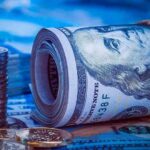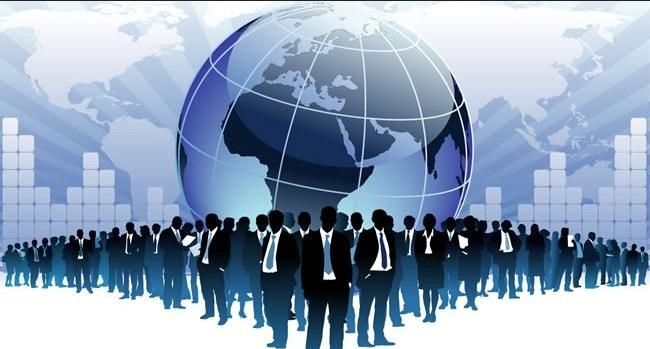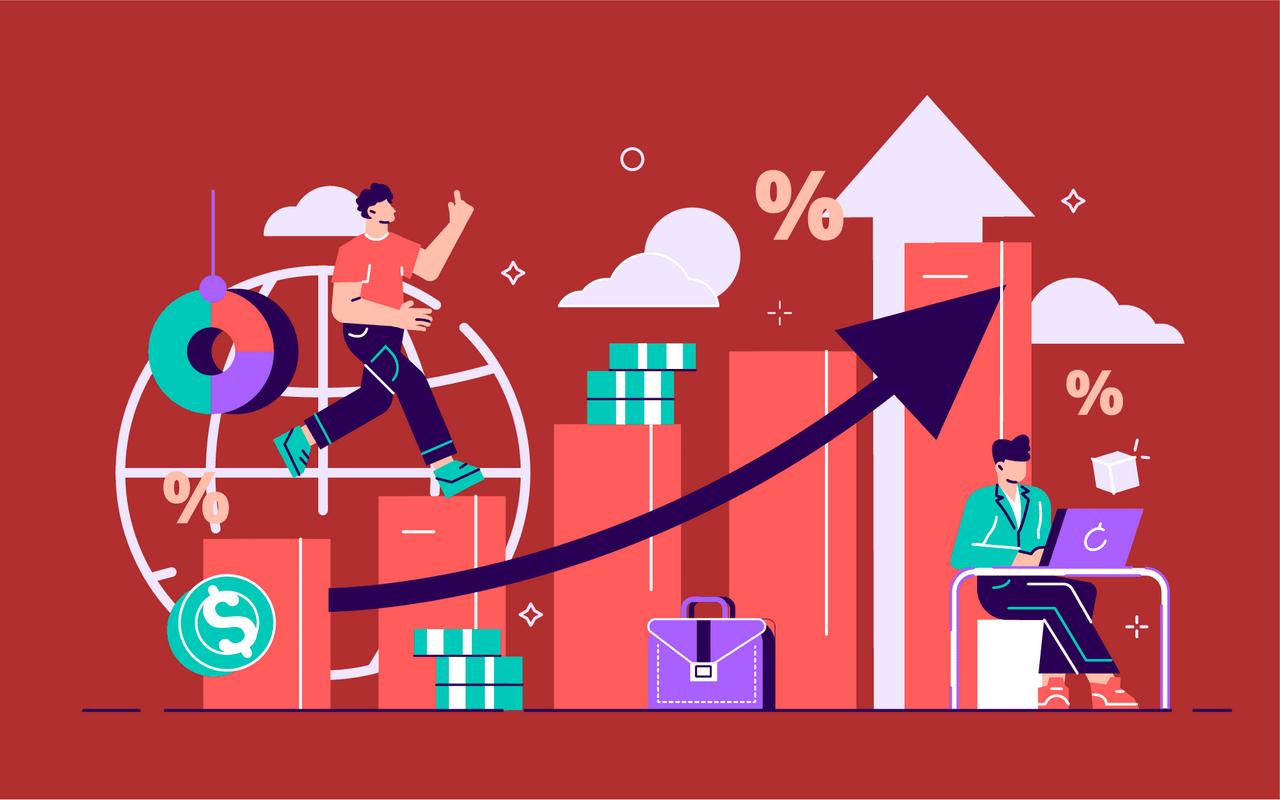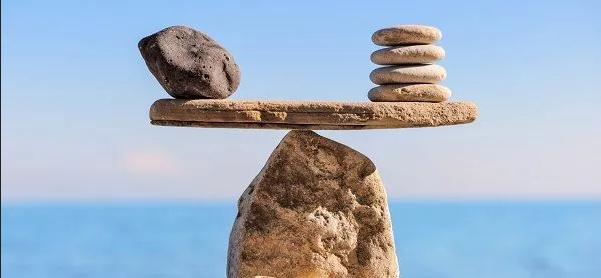Macroeconomics is a branch of economics that studies how an economy in general and market systems that operate on a large scale behave.
Macroeconomics studies economy-wide phenomena, such as inflation, price levels, the rate of economic growth, national income, gross domestic product (GDP), and changes in unemployment.
Some of the key questions addressed by macroeconomics include: What causes unemployment? What causes inflation? What creates or stimulates economic growth? Macroeconomics attempts to measure how well an economy is performing, understand what forces drive it, and project how performance can improve.
Macroeconomics is concerned with the performance, structure and behavior of the entire economy , in contrast to microeconomics , which focuses more on the choices made by individual actors in the economy ((such as people, households, industries, etc.) .
Understanding Macroeconomics
The study of economics has two sides: macroeconomics and microeconomics. As the term indicates, macroeconomics observes the general scenario of the economy.
Simply put, it focuses on the performance of the economy as a whole and then analyzes how different sectors of the economy relate to each other to understand how the aggregate works.
This includes analyzing variables such as unemployment, GDP and inflation.
Macroeconomists develop models that explain the relationships between these factors. Such macroeconomic models, and the forecasts they produce, are used by government entities to assist in the construction and evaluation of economic, monetary and fiscal policy ; by companies to establish strategies in national and global markets; and by investors to predict and plan movements in various asset classes.
Given the enormous scale of government budgets and the impact of economic policy on consumers and businesses, macroeconomics is clearly concerned with important questions.
Applied correctly, economic theories can offer insightful insights into how economies work and the long-term consequences of particular policies and decisions.
Macroeconomic theory can also help companies and individual investors make better decisions through a deeper understanding of what motivates other people and ways to maximize utility and resource scarcity.
Limits of macroeconomics
It is also important to understand the limitations of economic theory. Theories are often created in a vacuum and lack certain real-world details such as taxes, regulation, and transaction costs. T he real world is also decidedly complicated, its issues of social preference and consciousness not amenable to mathematical analysis.
Even with the limits of economic theory, it is important and valuable to follow major macroeconomic indicators such as GDP, inflation and unemployment.
The performance of companies, and by extension their actions, is significantly influenced by the economic conditions in which companies operate and the study of macroeconomic statistics can help an investor make better decisions and detect turning points.
Likewise, it can be invaluable to understand what theories favor and influence a particular government administration. The underlying economic principles of a government will say a lot about how that government will approach taxes, regulation, public spending, and similar policies.
By better understanding the economy and the ramifications of economic decisions, investors can have at least a glimpse of the likely future and act accordingly with confidence.
Macroeconomic Research Areas
Macroeconomics is a fairly broad field, but two specific areas of research are representative of this discipline. The first area is the factors that determine long-term economic growth, or increases in national income. The other involves the causes and consequences of short-term fluctuations in national income and employment, also known as the business cycle.
Economic growth
Economic growth refers to an increase in aggregate production in an economy.
Macroeconomists attempt to understand the factors that promote or retard economic growth in order to support economic policies that will support development, progress, and rising standards of living.
Adam Smith ‘s classic 18th-century work , An Inquiry into the Nature and Causes of the Wealth of Nations, which advocated free trade, laissez-faire economic policy , and the expansion of the division of labor, was possibly the first, and certainly one of the most important works in this body of research.
By the 20th century, macroeconomists began studying growth with more formal mathematical models . Growth is commonly modeled in terms of physical capital, human capital, labor force, and technology.
The economic cycle
Superimposed on long-term macroeconomic growth trends, the levels and rates of change of the main macroeconomic variables, employment and national production go through occasional upward or downward fluctuations , expansions and recessions, it is a phenomenon known as the economic cycle. The 2008 financial crisis is a clear recent example, and the Great Depression of the 1930s was actually the impetus for the development of more modern macroeconomic theory.
History of macroeconomics
While the term “macroeconomics” is not that old (going back to Ragnar Frisch in 1933), many of the central concepts in macroeconomics have been studied for much longer. Issues such as unemployment, prices, growth and trade have concerned economists almost since the beginning of the discipline, although their study has become much more focused and specialized throughout the 1990s and 2000s.
Elements of earlier work by people such as Adam Smith and John Stuart Mill clearly addressed questions that would now be recognized as the domain of macroeconomics.
Macroeconomics, as it stands in its modern form, is often defined from the beginning with John Maynard Keynes and the publication of his book The General Theory of Employment, Interest and Money in 1936. Keynes offered an explanation of the consequences of Great Depression, when goods remained unsold and workers became unemployed. Keynes’ theory attempted to explain why markets may not recover.
Before the popularization of Keynes’ theories, economists generally did not differentiate between microeconomics and macroeconomics.
The same microeconomic laws of supply and demand that operate in markets for individual goods were understood to interact between global markets in the same way to bring the economy to general equilibrium, as Leon Walras described.
The link between goods markets and large-scale financial variables, such as price levels and interest rates, was explained through the unique role that money plays in the economy as a medium of exchange by economists such as Knut Wicksell , Irving Fisher and Ludwig von Mises.
Throughout the 20th century, Keynesian economics, as Keynes’ theories became known, split into several other schools of thought.
Macroeconomic Schools of Thought
The field of macroeconomics is organized into many different schools of thought, with different views on how markets and their participants operate.
Classical economists
Classical economists maintain that prices, wages, and rates are flexible and that markets are always clear, based on the original theories of Adam Smith.
Keynesianismo
Keynesian economics was founded largely on the works of John Maynard Keynes. Keynesians focus on aggregate demand as the main factor in issues such as unemployment and the business cycle. Keynesian economists believe that the business cycle can be managed by active government intervention through fiscal policy (spending more during recessions to stimulate demand) and monetary policy (stimulating demand with lower rates). Keynesian economists also believe that there are certain rigidities in the system, particularly rigid prices and costs, that prevent adequate compensation between supply and demand.
Monetarismo
The monetarist school draws heavily on the works of Milton Friedman. Monetarist economists believe that the government’s role is to control inflation by controlling the money supply. Monetarists believe that markets are usually clear and that participants have rational expectations. Monetarists reject the Keynesian notion that governments can “manage” demand and that attempts to do so are destabilizing and likely to lead to inflation.
New Keynesianism
The new Keynesian school attempts to add microeconomic foundations to traditional Keynesian economic theories. While New Keynesians do accept that households and businesses operate on the basis of rational expectations, they still maintain that there are a variety of market failures, including rigid prices and wages. Because of this “rigidity,” the government can improve macroeconomic conditions through fiscal and monetary policy.
Neoclassical
Neoclassical economics assumes that people have rational expectations and strive to maximize their utility.
This school assumes that people act independently on the basis of all the information they can obtain. The idea of marginalism and marginal utility maximization is attributed to the neoclassical school, as is the notion that economic agents act on the basis of rational expectations.
Because neoclassical economists believe that the market is always in equilibrium, macroeconomics focuses on the growth of supply factors and the influence of the money supply on price levels.
The new classics
The new classical school is largely based on the neoclassical school. The new classical school emphasizes the importance of microeconomics and models based on that behavior . New classical economists assume that all agents try to maximize their utility and have rational expectations.
They also believe that the market is clearing at all times. New classical economists believe that unemployment is largely voluntary and that discretionary fiscal policy is destabilizing, while inflation can be controlled by monetary policy.
Austrian School
The Austrian school is the oldest school of economics that is experiencing some resurgence in popularity.
Austrian school economists believe that human behavior is too idiosyncratic to accurately model with mathematics and that minimal government intervention is best .
The Austrian school has provided useful theories and explanations about the business cycle, the implications of capital intensity, and the importance of time and opportunity costs in determining consumption and value.
Macroeconomics vs. Microeconomics
Macroeconomics differs from microeconomics, as the latter focuses on smaller factors that affect the choices made by individuals and companies. The factors studied in both microeconomics and macroeconomics generally influence each other. For example, the level of unemployment in the economy as a whole has an effect on the supply of workers a company can hire.
A key distinction between micro and macroeconomics is that macroeconomic aggregates can sometimes behave in very different ways or even the opposite of what analogous microeconomic variables do. For example, Keynes proposed the so-called Savings Paradox , which argues that, while for one individual, saving money may be the key to generating wealth, when everyone tries to increase their savings at the same time, it can contribute to a slowdown in the economy and less wealth in the aggregate of the economy as a whole.
Meanwhile, microeconomics looks at economic trends, or what can happen when individuals make certain decisions.
Individuals are generally classified into subgroups, such as buyers, sellers, and business owners. These actors interact with each other according to the laws of resource supply and demand, using money and interest rates as pricing mechanisms for coordination.











